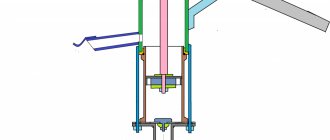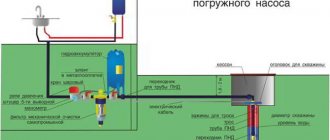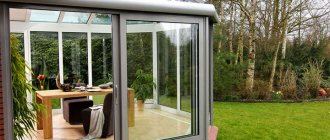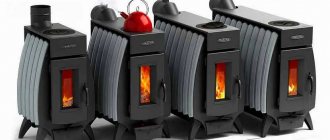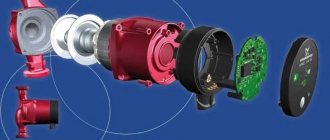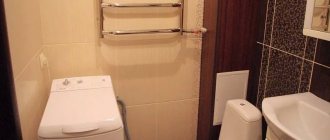The state policy pursued in the field of energy saving assumes that all residential and commercial facilities that consume energy resources must be equipped with individual metering devices. Therefore, the installation of water meters is a mandatory procedure, providing reliable control over resource consumption and allowing for savings, since the presence of an IPU in a house or apartment eliminates the need to pay for water losses that supply organizations allow.
Is it necessary to install water meters in 2021?
Based on current legislation, the presence of IPU water in residential and commercial premises is mandatory for all objects being built or constructed. This rule is enshrined in Federal Law No. 261-FZ of November 23, 2009 (as amended on April 23, 2018).
Owners must install meters; this obligation is enshrined in Decree of the Government of the Russian Federation No. 354 of 05/06/2011 (as amended on 03/27/2018). If the facility is leased from the municipality, then the administration is responsible for re-equipping the water supply systems.
Although by law all owners of private houses and apartments must install a water meter, there are no fines or sanctions for failure to comply with obligations. To stimulate the process, a special form of calculating monthly payments is used, as a result of which the amount increases significantly.
Complex home water supply schemes
When installing a complex water supply system for a house using a water heating system, the tasks of the pumping station are performed by separately mounted devices included in the general water supply to the house:
- Pump;
- Diaphragm tank (hydraulic accumulator);
- Pressure switch;
- Pressure reducer, dry running;
- Storage tank;
- Water heating unit for plumbing;
- Heating unit;
- Several automatic heating and water supply units, etc.
There will be even more devices for gas heating, as well as in systems with warm water floors and a double-circuit heating system.
Diagram of a complex water supply scheme for a two-story house
Water norm per person without meter
If you do not install a device that controls resource consumption, then the average monthly value of required consumption per person will be used for calculation.
Cold
Accrual according to the standard is a measure that supply organizations and management companies resort to in the absence of a water meter. This procedure is completely legal and enshrined in relevant acts.
Monthly cold water consumption is calculated from average values:
- taking a bath (once a week) – up to 200 l;
- shower use (every day) – about 30 l;
- daily needs - 200 liters per week.
Additionally, expenses for household needs are taken into account.
Based on this, a standard for cold water was derived, which is 6.935 cubic meters. But this indicator is calculated for all registered (temporarily or permanently) persons. Thus, the calculation for the three registered will be: 6.935x3 = 20.805 cubic meters, which will be a significant amount.
hot
The DHW rate is less than cold water consumption. To determine the average monthly consumption, the main expenses per day are taken into account: according to the consumption analysis, a person spends no more than 140 liters of hot water. Based on this, there are 4.745 cubic meters per registered resident. When calculating payment for the billing period, the value is multiplied by the number registered.
Attention! The utility service provider has the right to increase the existing standard, but not more than 2 times.
Additional coefficient
If the owner of a house or apartment fundamentally does not want to install an IPU even if it is technically possible, then an increasing indicator is used when calculating consumption. In 2021, the additional coefficient is 1.5, but it is planned to gradually increase.
The scheme for calculating the consumption of hot or cold water in this situation is as follows:
6.935 (standard) x 3 (number of residents) x 38.06 (tariff for a specific region of the Russian Federation, in this case Moscow) = 791.83 x 1.5 (coefficient) = 1187.75 rub.
Thus, connecting the IPU provides significant savings.
The main methods of installing water supply in an apartment
There are two main schemes for distributing water supply in an apartment: tee, also known as sequential, and also collector. Both schemes have certain advantages and disadvantages, so they are used for different situations. In addition, sometimes it makes sense to combine both of these schemes.
Method #1. Series (tee) circuit
This is the easiest way to design and implement plumbing in a typical apartment. This scheme consists of one common pipe, to which all devices - consumers of cold tap water - are connected in series. In the same way, a hot water supply system is installed in parallel.
The main pipe must be larger in diameter than the rest of the water supply, since it functions as a collector in this system. Tees are used to connect plumbing fixtures, which is why this scheme is often called a tee.
The principle of such a system is very simple both for design and implementation. Water supply is organized in a similar way in almost all apartments built according to standard Soviet designs. One of its significant advantages is the small number of water pipes. Therefore, the costs of creating such a water supply system will be minimal.
Requirements for installing water meters
To avoid errors and problems, you should follow the following recommendations:
- Installation of only certified products is allowed. The manufacturer must independently carry out the first verification of the device and record this in the passport. Additionally, water meter numbers and seals are applied to the housing, which confirm the suitability of the IPU and exclude changes to the design.
- The apartment meter is located in a room that serves to supply supply pipes. If there are several points, as happens when there are systems in the kitchen and bathroom (WC), then the devices are installed in both rooms.
- In private houses, the IPU can be placed in the basement, but if the main line is long, the meter is installed before the entrance to the building. A special well is made for this.
- The minimum temperature at the location site is not lower than +5 degrees.
- The selected location should be convenient for checking the functionality of the product.
- The installation of the mechanism in the water supply system is carried out according to the standard scheme; a coarse filter must be installed in front of the meter. It has a simple configuration and allows you to trap large debris. This not only guarantees the safety of the device, but also prevents violations of the recording of readings.
- The IPU cannot be placed far from the site where it is inserted into the main system (riser); the distance from the starting point to the installation site should not exceed 20 cm. Exceptions are possible only in special cases.
- Water meters must be registered and sealed. Indications from a mechanism that has not been put into operation are not subject to recording.
For installation, it is recommended to involve specialists or obtain detailed advice from a service company in advance.
Pipe materials and sizes
For the installation of inputs with a cross-section of 50 mm or more, cast iron pipes are predominantly chosen; for smaller diameters, pipelines made of steel, galvanized or polymers are chosen. Steel products without zinc coating with bitumen insulation against rust are used when the pressure in the line is more than 1 MPa and the cross-section of the inputs is more than 50 mm.
When selecting pipe sections according to cross-sectional size, they are based on two criteria: the speed of the water flow, as well as the total length of the water main. The first indicator is usually standard: water moves at a speed of approximately two meters per second. The second varies depending on the area of the building and the distance of plumbing fixtures. For example, with an expected water pipeline length of less than ten meters, pipe sections with a cross-section of 20 mm are sufficient, from 10 to 30 m - 25 mm and more than 30 m - 32 mm.
Artist selection
Installing a water meter is a responsible process that requires compliance with all conditions. Although the rules do not establish a specific list of persons and organizations that are allowed to install IPU, it is recommended to choose from the following list:
- Management company or supply structure. The utility service provider in an apartment building or private building also provides services for installing meters. These organizations have full access to all water supply systems, which eliminates the need to coordinate shutdowns.
- Specialized companies. Many stores that sell plumbing supplies also do installation work.
- Private individuals. It is advisable to contact specialists who have good recommendations.
The installation can be done independently, but only if you have the tools and experience, since when introducing the IPU into the system, serious difficulties in inserting and fitting may arise.
Attention! Regardless of the option chosen, the specialist or organization must provide guarantees for the services provided. This is confirmed by the contract and payment receipt.
Fine filter
If you want your plumbing equipment to last a long time, then you should take care of protection from small particles - a fine filter is used for this. These types of filters purify water from particles up to 100 microns.
Our company recommends using self-cleaning fine filters from Far. They have a backwash function, which allows you to wash the filter without additional work or calling a specialist.
Preparation for installation work
Procedure before installing the IPU:
- All necessary devices and components are purchased and mounting space is freed up. It is advisable to agree on the installation site in advance to avoid problems. It is important to choose the right water meter: according to SNIP 04.01-85, the placement of the mechanism must take into account the sensitivity threshold. Therefore, you should pay attention to the designation: symbol B (B*H) - the product must be placed horizontally, A (A*V) - vertically. If both options are present, then the IPU is universal.
- When a new device is introduced into the system, the inlet shut-off valve should be checked. If the ball valve is working properly, then there is no need to coordinate the installation, but you need to write an application to the service company to invite a specialist to put the IPU into operation. If it is impossible to completely shut off the water or when replacing part of the system, it is necessary to agree on the time to turn off the riser. This is not required if a plumber from a home maintenance company is hired to do the work.
- It is also necessary to contact the Criminal Code when reinstalling the mechanism. The specialist will take readings, after which the filling can be removed.
On a note! DHW IPUs are universal and suitable for installation on all pipes, but cold water meters can only be used for cold water.
Distribution manifold
Collector wiring is the most functional and modern type of water supply wiring. The use of a collector system helps to reduce the pressure drop while simultaneously using several water collection points. If necessary, allows you to locally disable the desired consumer. Another advantage of this type of wiring is the minimization of the number of pipe connections inside the walls and screeds.
We recommend using distribution manifolds from Far, as their design allows you to change shut-off valves without replacing the entire manifold.
Collector water supply distribution >>
How to install a water meter yourself
The procedure for doing work with your own hands has a certain sequence.
Assembly of the structure
The process is carried out in a straight section until the first connection:
- A shut-off valve is placed on the branch from the riser. If the pipe of the water supply system is metal, then it is sawed off to the required size, after which a thread is formed. A special rod is soldered to plastic pipes.
- A coarse filter is installed. A mesh is attached to the diagonal branch, which is locked with a bolt, to prevent the penetration of various particles. This option is suitable for both vertical and horizontal installation.
- The meter is installed. The direction is indicated by an arrow. The placement must ensure unobstructed reading of the readings.
- A connecting element is installed, behind which additional mechanisms (check valve or tap) can be installed.
Diagram and order of connecting elements when installing household water meters
Independent execution of work has a more complex scheme if it is necessary to place the IPU in a functioning system. In this case, you need to first assemble the structure, and, focusing on the size, taking into account the adapters, cut out the area for installation.
Installation nuances
The IPU should be installed according to certain rules:
- If the system is made of metal pipes, then you need to ensure their reliability. Due to hidden corrosion, leaks appear in the areas where the meter is connected over time. If the pipes are polypropylene, installation of metal parts is carried out using special adapters.
- The pipes used for cutting threads must be cleaned and sanded. The internal space is freed from chips and delaminations.
- All successive links of the structure are fastened together with nuts. Gaskets are placed between the metal elements to ensure that there are no small gaps.
- Threaded connections are sealed with a special winding or fum tape. Additionally, a sealing paste is used.
- If two IPUs for cold and hot water are installed nearby, then a branch may be required that separates the mechanisms from each other. To do this, a corner adapter is placed at the connection point.
- All connections must be securely fastened, but be extremely careful so as not to cause microdamage. A correctly assembled structure, including gaskets and seals, is leak-tight when tightened as standard.
The system can be assembled on site or in advance; it is necessary to carry out a check. After opening the shut-off and household tap, the water meter should begin recording resource consumption.
Briefly about the main thing
The law determines that water meters must be installed at all facilities, regardless of their purpose.
There are several types of water meters, and they are divided according to the bore diameter, the number of channels inside, and the type of counting mechanism: mechanical and electronic. The latter are the meter itself and the remote panel connected by cable.
Manufacturers offer dry and wet meters. In the first, the counting mechanism is located in a sealed chamber and does not come into contact with water. In the second, this mechanism comes into contact with water.
Water meters are produced in two classes: “A” – with an error of ±1%, “B” – ±2%.
Installation is carried out in a well on the street so that water utility representatives can freely take readings.
The water meter unit consists of the meter itself, two shut-off valves, a strainer and a check valve.
Ratings 0
How to register water meters
The established IPU must be drawn up in accordance with current legislation. To do this, you should contact the utility service provider with whom the resource supply agreement has been concluded. This role can be played by a management company or a homeowners' association.
List of documents
In accordance with Decree of the Government of the Russian Federation No. 354, the owner of a residential or commercial premises must register the meter.
You will need to provide the following information:
- Full information about the owner: Full name, address, registration, passport details and contact phone number.
- Date of commissioning of the IPU (installation day or next).
- Meter information: number, model, location.
- Additionally, you can indicate the details of the company that carries out the installation, but this is also relevant for work that requires licensing and appropriate permission.
- Instrument readings. The control information will be removed by a representative of the contractor.
- Copies of technical documentation and water meter passport.
- If the device is re-registered in connection with the verification carried out, then a certificate is provided confirming the operability of the mechanism.
It is taken into account that the period for commissioning the product is limited: all actions must be carried out no later than a month after installation of the IPU.
Advice! Documents can be submitted to the branch of the supplying organization, management company or EIRC, if so provided.
Registration of devices installed by yourself
The procedure for putting the device into operation during self-installation is as follows:
- The application and documents are submitted to the utility service provider or service company.
- A specialist or several authorized persons arrive at the appointed time.
- The functionality of the device is checked, the installation is correct, and the numbers are checked.
- The water meter is sealed, a report is drawn up that confirms commissioning.
- The received document is transferred to the settlement center.
The changes must be reflected in the next receipt, as well as in the user’s personal account (if the service organization provides access to the electronic resource).
From a purely technical standpoint, installing a water meter is possible with your own hands, but sealing and registration is the prerogative of regulatory government agencies
House water supply with submersible pump
When using a well pump, it often makes it possible not to use a ready-made pumping station, but to install only a hydraulic accumulator and an automation unit in the house. The automation unit can replace the pressure relay, dry-running and pressure reducers installed at the hydraulic accumulator. In this scheme, the submersible pump is not included in the water supply inlet, but belongs to the source equipment.
Service life and verification of meters
The owner of the premises is obliged to confirm the operability of the IPU within the prescribed period. The interval is set by the manufacturer and indicated in the product passport. It is taken into account that it is from the factory verification that the period until the next one is calculated: for DHW metering devices - 4 years, for hot water supply - 6 years. Learn more about how to check water meters at home without removing them.
When assessing the functioning, which can only be carried out by an accredited organization, attention is paid to the maximum service life of the mechanism - 12 years.
Features of the designations used
To correctly place a sewerage system in a building, it is worth, first of all, taking into account all possible nuances in the preliminary drawing
It is worth remembering that a different project should be used for each type of room. In addition, the designer must take into account other factors, including:
- building features;
- geographical location;
- number of residential and non-residential rooms;
- number of pins for connecting drains.
Even at the design stage, a large number of nuances arise. It is to take them into account that a diagram will be required, which includes the designation of the sewerage system, and according to which subsequent installation work will be carried out.
During the design process, generally accepted symbols on water supply and sewerage drawings should be used. Such symbols are easy to understand for a master who really understands his work.
The designation of sewerage in the drawings, which is used during the design of the project, is regulated by the relevant GOSTs and SNiP rules. GOST 21.205-93 SPDS. Symbols for elements of sanitary systems. The use of any other types of images is considered unacceptable.
4.2.3 Mine well
4.2.3.1 A shaft well is preferable for use when the depth of the aquifer is no more than 30 m. It is a vertical mine working with a round or square cross-section with a diameter (side length) of at least 1.0 m. The walls of the well can be made of wood, stone, concrete or reinforced concrete, polymer materials. The well is intended to accommodate a water intake device. With different options for the adopted water supply network scheme, a stationary pump and a hydraulic pneumatic tank can also be placed on a special platform inside the well or in an underground chamber adjacent to the well shaft. 4.2.3.2 The head and shaft of the shaft well must be protected from contamination by surface and groundwater. The top of the head must be at least 0.8 m above ground level and covered with a lid. Around the well there should be a blind area 1 - 2 m wide with a slope from the well and a waterproof clay castle 0.5 m wide to a depth of 1.5 -2 m. 4.2.3.3 The bottom of the well when receiving water through it should be equipped with a gravel filter or on it a slab of porous concrete must be laid. When receiving water through the walls, windows should be installed in them, filled with a gravel filter or porous concrete. 4.2.3.4 When the thickness of the aquifer is up to 3 m, shaft wells of the perfect type should be provided - with the opening of the entire thickness of the layer; with a greater thickness of the formation, imperfect wells are allowed - with opening the formation to a depth of at least 2 m. 4.2.3.5 It is recommended to supply water from the mine well to the water supply network using submersible electric pumps. When the dynamic water level is less than 6 m, surface pumping units can be used.
System design
For successful and uninterrupted operation of the system, it is recommended to carry out the correct structural arrangement of the pipeline. More often, the system is equipped from factory pipes. There are certain requirements for the arrangement of water supply:
- strength to withstand external and internal loads;
- tightness;
- smooth surface of the internal walls, which reduces pressure loss due to friction;
- durability.
The consumables used must be quickly and easily assembled at the site where the system is installed. The water supply network must meet the requirements of increased efficiency. Pressure pipes are selected taking into account water resistance. To calculate the working pressure, the footage of the entire network and the diameter of the pipeline used are taken into account. Calculations can be carried out independently or by seeking help from specialists.
Taking into account the requirements for the installation of consumables, the pipes must have the required strength. This will allow them to withstand the pressure exerted by the soil, including deflection of their own weight. In this case, possible loads exerted by transport are taken into account.
The tightness of pipes and joints is an important condition for the successful and economical operation of the network. If tightness is not observed, excess fluid consumption is observed, which contributes to an increase in the cost of operating the water supply network.
Water leakage from the system can result from soil erosion and a serious accident on the highway. To equip the system under consideration to serve any object, pipes are used, the choice of which depends on the following criteria:
- volume of liquid supplied;
- soil type;
- working internal pressure.
Therefore, different types of pipes can be used for water supply systems, taking into account the conditions of the area where construction work is being carried out. To improve the external water supply, steel, reinforced concrete and cast iron pipes are used. You can lay a pipeline from synthetic pipes. To make the right choice, it is first recommended that you familiarize yourself with the performance characteristics of all types of pipes.
